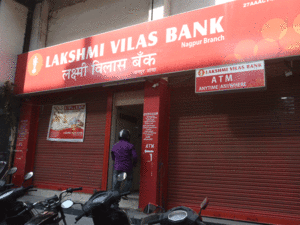
Story outline
- If your salary or any other income was being auto-credited into your LVB savings account then immediately inform the payer to route the credits to an alternative savings account of yours.
- If you have given mandates for auto-debit from your LVB account then these payments will be debited from your LVB account provided the total amount of debits does not exceed Rs 25,000 during the moratorium period.
To quell fears of LVB's customers, RBI, in its press statement issued on November 17, 2020, has clarified that depositors need not panic and their interests will be fully protected. Added to this, TN Manoharan, the RBI-appointed administrator of Lakshmi Vilas Bank, on Wednesday said that depositors' money is safe and expressed confidence of completing the lender's merger with DBS Bank India within the deadline set by the regulator.
Now, if you are customer of LVB, you would be understandably worried about the future of the bank and more importantly, your own money in the bank. Obviously, you have seen in the recent past what happened to depositors at PMC Bank in September last year and YES Bank in March this year.
So, let us look at what are the restrictions placed under the one-month moratorium for LVB depositors, what accountholders should do and what they can expect once the merger with DBS India is completed.
- Restrictions under moratorium
Under the moratorium period (till December 16, 2020), withdrawals for depositors have been capped at Rs 25,000. The withdrawal limit for all types of accounts held by a depositor cannot exceed Rs 25,000. Thus, the withdrawal cap is per depositor and not per account.
However, higher withdrawals are allowed to meet unforeseen expenses such as medical treatment of the depositor or any person dependent on the depositor, cost of higher education of the depositor or any other person dependent on the depositor in India or outside India, for marriage of the depositor or his children or any other person dependent on the depositor or in connection with any other unavoidable emergency. The withdrawal amount in the exception cases cannot exceed Rs 5 lakh, stated RBI.
Here's what a savings account holder needs to do.
- Stop all auto-credits into your LVB savings account
You need to inform the payer of these incomes in writing that you want the payments credited into a different bank savings account i.e. change the earlier bank mandate given to the payer. Once LVB-DBS merger is complete, you can then evaluate whether you want to continue your existing LVB savings account (post its merger with DBS) and restart the credits into the account.
- Regarding auto-debit from LVB accounts during the moratorium period
Further, the RBI has clarified that if a depositor has taken a loan from LVB whose EMI due date falls during the moratorium period, then such EMIs will be debited from the depositor's account. Remaining balance in account, if any, will be available for withdrawal purposes. For instance, assume you have taken a loan from LVB whose EMI is Rs 13,000 and EMI debit date is 25 of every month. This means that from your LVB account, you will be eligible to withdraw Rs 12,000 only (Rs 25,000 - Rs 13,000) during the moratorium period.
- Post the merger with DBS India
IFSC code: Another thing to keep in mind is that post the merger, the IFSC codes will also change. This means that customers who wish to continue their accounts with the merged entity, will have to register new bank mandates wherever they have used the IFSC code for auto-debit purposes; this could be with mutual fund houses, insurance companies, NPS deposits etc.
Loans: The RBI notification has clarified that if LVB has received the full payments against the any due amounts from the borrowers, then the bank can release the securities that have been pledged, hypothecated, or mortgaged during the moratorium period.
However, once the merger is completed, the borrower should keep track of the interest rate offered to them on their on-going loan by DBS India. If the interest rate ends up being higher, then you will have to take a call on whether you want to continue servicing the loan with the merged entity or transfer your loan to another bank.
- Deposits are insured for up to Rs 5 lakh
(Your legal guide on estate planning, inheritance, will and more.)
Download The Economic Times News App to get Daily Market Updates & Live Business News.
Read More News on
(Your legal guide on estate planning, inheritance, will and more.)
Download The Economic Times News App to get Daily Market Updates & Live Business News.









 Get Unlimited Access to The Economic Times
Get Unlimited Access to The Economic Times
